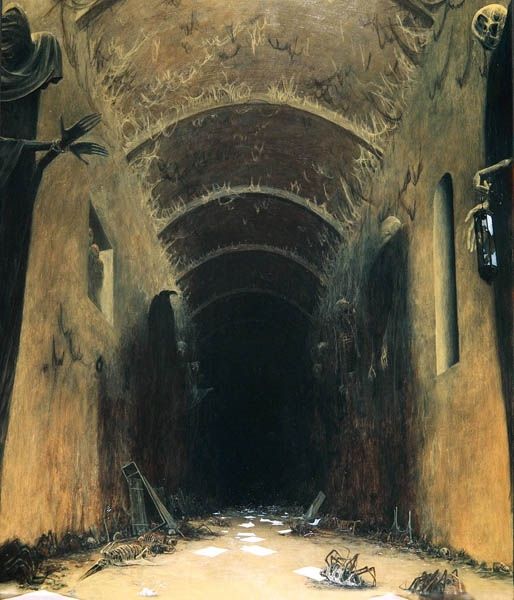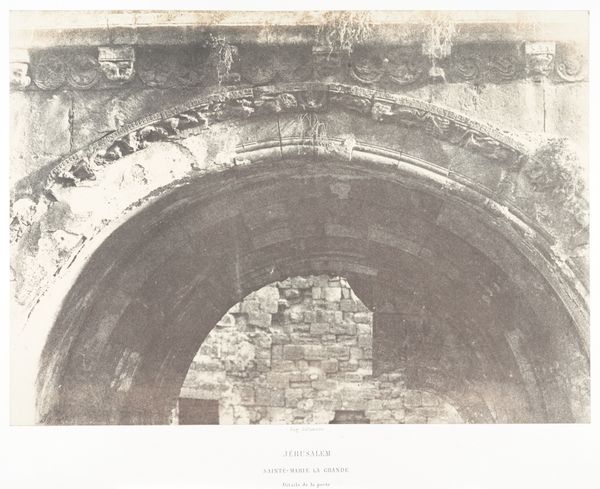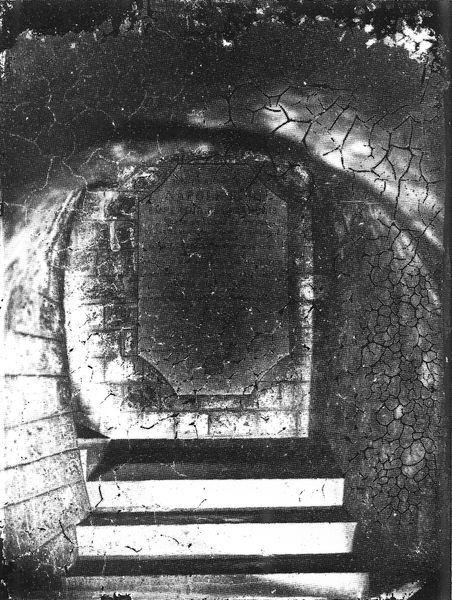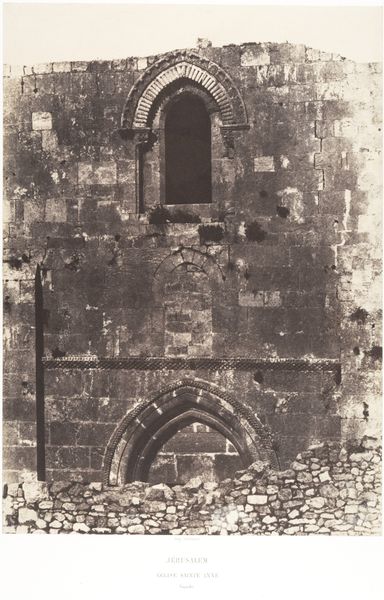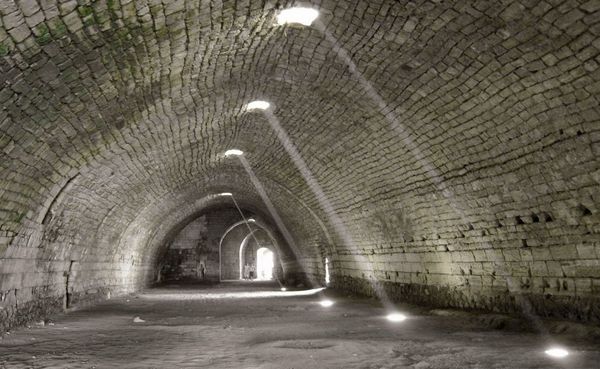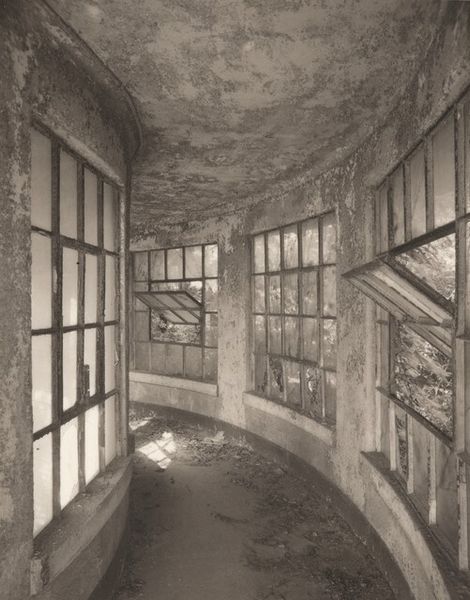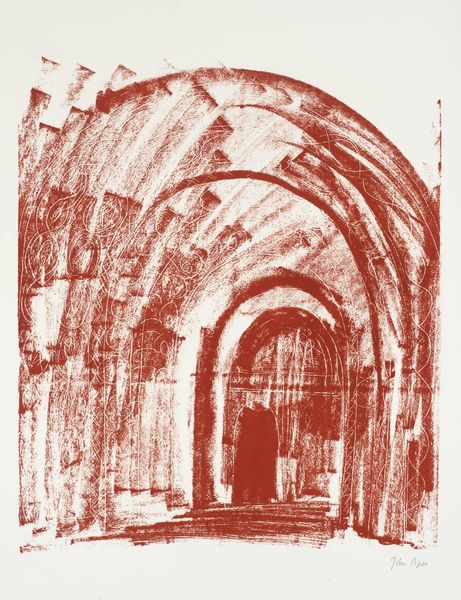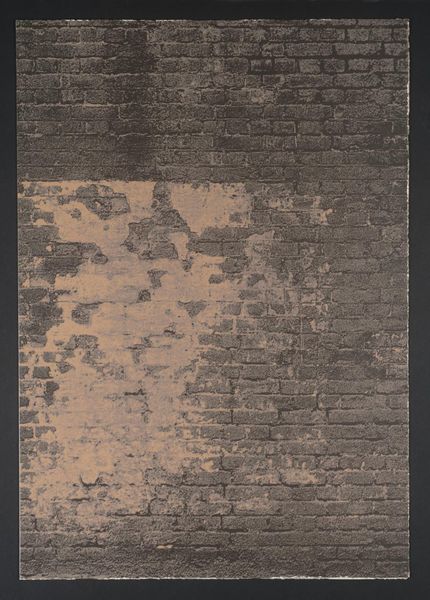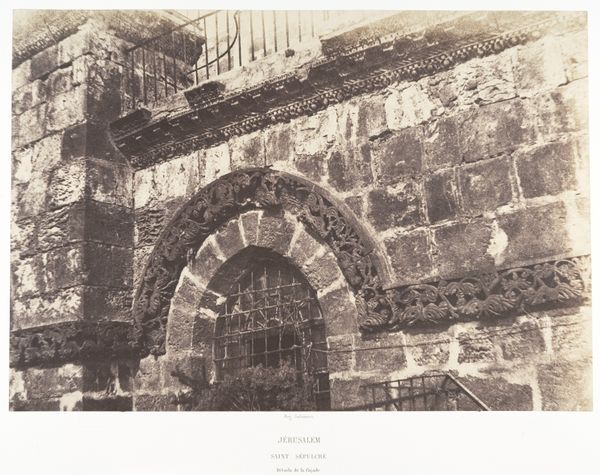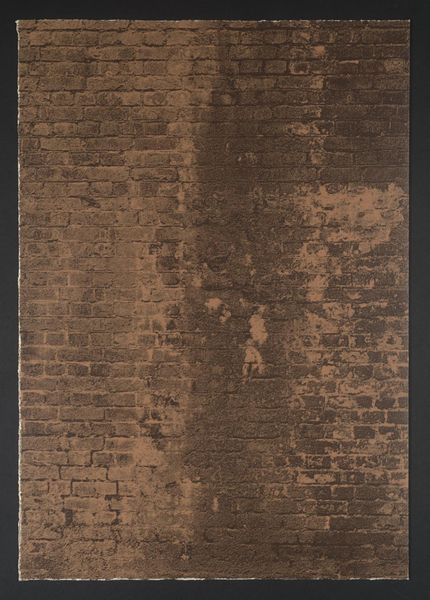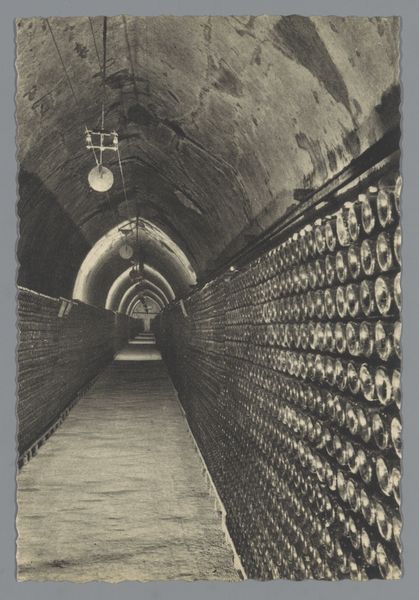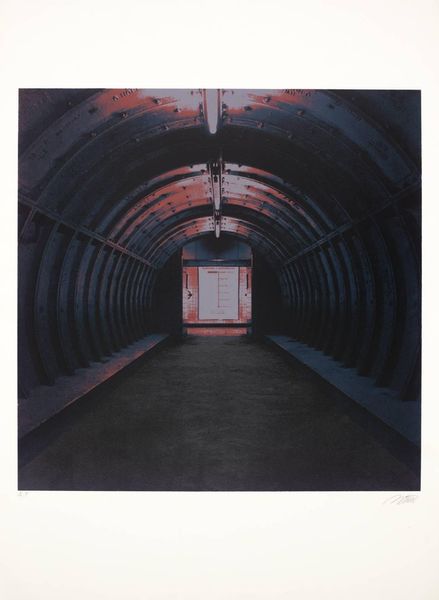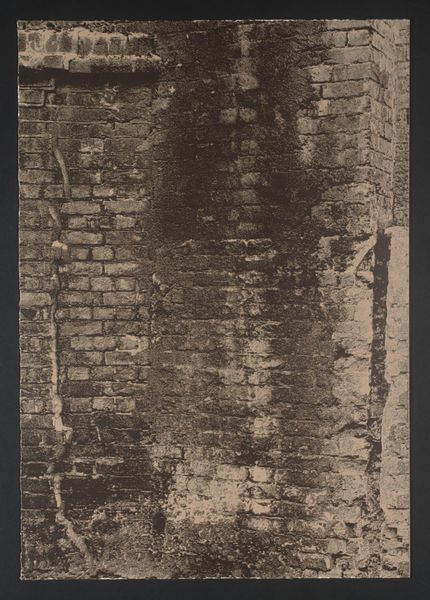
mixed-media, acrylic-paint, architecture
#
mixed-media
#
landscape
#
acrylic-paint
#
neo-expressionism
#
mixed medium
#
mixed media
#
architecture
Dimensions: 290 x 370 cm
Copyright: Anselm Kiefer,Fair Use
Curator: Standing before Anselm Kiefer's "Sulamith" from 1983, what strikes you first? The artwork is a powerful mixed-media piece incorporating acrylic paint and architectural elements. Editor: Gloom, actually. This subterranean architecture feels oppressively heavy. It’s as if the arches are closing in, almost burying you alive in the brick. The limited palette deepens this sense of foreboding and makes one focus on structure, rhythm and decay. Curator: I see it too. It's interesting you picked up on the subterranean aspect because it portrays the interior of the synagogue in Berlin designed by Edwin Oppler that was destroyed during the Nazi regime. Kiefer felt an obligation, almost, to keep those shadows alive. Editor: Ah, that shifts everything. I was locked onto this aesthetic reading of ruin, texture, light and shadow, which definitely persists. But the specific historical context… the layered bricks become inscribed with collective memory. It's no longer an arbitrary space. It’s charged. How does he create that feeling in his medium, or is this just us injecting what we know into it? Curator: I think it’s very much built in. The thick application of paint and incorporated materials makes the surface rugged and textured, echoing the worn, damaged structure itself. Then the use of brown hues adds this overwhelming weight that hints at mourning, while also highlighting the way buildings tell stories themselves through their decaying forms. Editor: Do you find he leans on certain cues like form and the natural decay of mediums, knowing these details will cue certain affects? The architecture is very Roman, that would carry certain implications to anyone with any art history knowledge. Plus the title of the piece alludes to Paul Celan’s poem about Sulamith who was murdered in Auschwitz. Curator: Absolutely, but for me the architectural setting does the same. Architecture isn’t ever an isolated entity; it's always intertwined with history, ideology, power… Here, Kiefer utilizes architecture as a stage upon which to play out narratives of loss, remembrance, and, perhaps, the impossibility of forgetting. The material gravity becomes a kind of emotional gravity. Editor: So, we circle back. Whether intuitive, formal, or something in between, there’s something elemental and deeply tragic. The heaviness sticks with you. Curator: Exactly, the gravity of history made visible, forcing us to remember, reflect, and perhaps, rebuild.
Comments
No comments
Be the first to comment and join the conversation on the ultimate creative platform.
